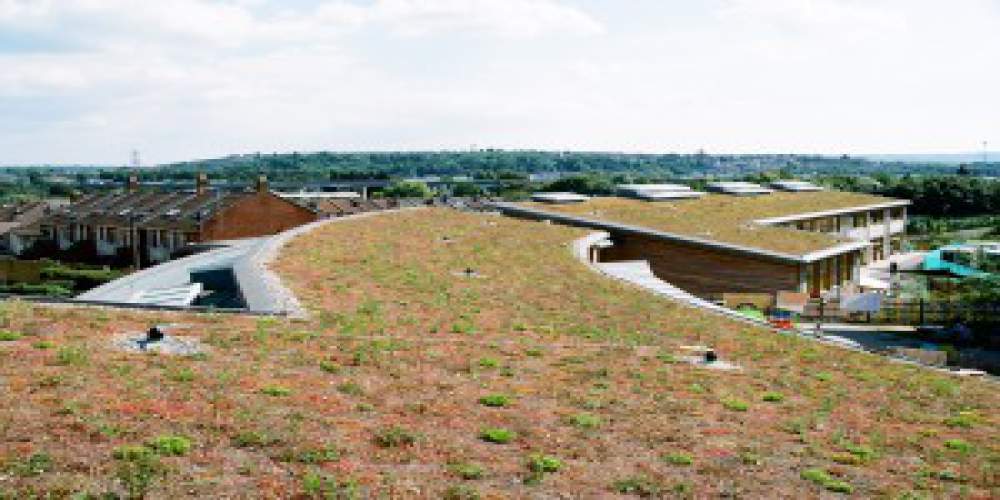As we all know Britain has recently been hit by some of the worst storms in living memory. January was England’s wettest winter month in almost 250 years. Three times the average rainfall fell leaving many homes and lives devastated by flood waters, and unfortunately, more rain is on the way. It seems that tensions are running high and the people of Britain are getting angry with the government claiming a lack of planning and a seemingly slow response to the floods has worsened the effects of the recent storm season. Well perhaps one proven, Green initiative we could employ to combat future floods in cities and large towns would be green roofing.
Green roofing is the process of adding living matter to rooftops, usually in the form of Sedum which is a large genus of succulent flowering plants that can be used with very little substrate / soil to cover roof tops for a range of benefits (Learn more about Green roofing).
The process has been proven to slow water run-off into drainage systems by retaining the water within its biological and soil medium and slowly releasing it into its own gravel drainage system. Eventually releasing what isn’t consumed or evaporated sometime after the rains normal and immediate run-off time, and at a more regulated rate. Studies have also shown that a green roof will actually entirely soak up the first 5mm of rain that falls on a daily basis. According to research, green roofs are able to retain on average 82% of rainfall compared to 27% on a pure gravel roof and 0% of a standard tar or tiled roof.
Eco Green Roofs co-founder, James Edwards claims: "Green roofs enhance the drainage of any flat roof or pitch roof because the water has to pass through the soil in the system. Then it's slowly released back into the drainage system as opposed to the sudden shock of normal rain flooding." This allows our drainage systems to cope more efficiently with excess water.
The city of Toronto in the USA was the first city in North America to pass a bylaw to require and govern the construction of green roofs on nearly all new development. It was passed in May 2009 and is said to have completely put a stop to the flooding of storm drains during heavy rain in the high tourist season.
So it would seem that Green roofs could certainly help protect our urban areas from flooding but this isn’t the only reason why they are becoming more and more popular.
The UK Government’s target for all homes to be carbon-neutral by 2016 combined with the evidence that suggests a large enough green roof can significantly reduce a properties carbon emissions, might lead to further government incentives for those with applicable roofing space, in the near future.
It’s now accepted that a 1000m2 roof space will offset nearly 5 tonnes of carbon emissions a year. They can also contribute to carbon emission reduction indirectly because they can insulate your property meaning that there may be less demand for heating in winter or for air conditioning / cooling in summer. The website www.environment-agency.gov.uk has stated this about an area called Islington in central London: ‘Due to the thermal mass of the green roof, no air conditioning has been installed. This has led to a reduction in 3,800kW/hrs and a saving of 1.6 CO2 tonnes.’ Studies have also suggested that the air above a green roof can have up to 37% less sulfur dioxide.
The more greenery we add to our cities, towns and densely concreted areas the more control we can have over the impact of heavy rainfall. Green roofs aren’t practical for all of us but with the public awareness of this practice rising we are seeing a steady increase in installed area. They bring great value to individual houses through insulation, sound proofing, roof life extension but also to whole areas through air purification, combating the urban heat island effect, increasing species habitat availability, plus they can be of great benefit to those affected by flooding in built up areas.






























